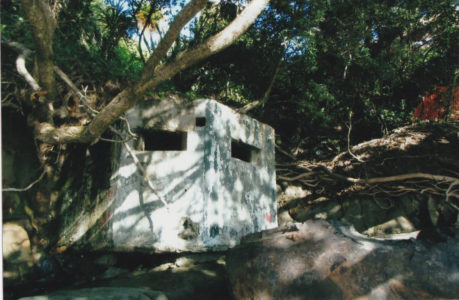
As Howick and districts count down to the 175th anniversary in 2022, the Times continues its series by ALAN LA ROCHE giving readers a glimpse of life as it used to be. The countdown began at the 170th in 2017
The Government announced the Home Guard regulations in August 1940 when the bulk of our troops were in Egypt and New Zealand was vulnerable to possible invasion.
They were controlled by a team of advisors in Wellington. They must provide their own weapons, no uniforms but arm band instead and no pay. All men 40 to 60 years must join if not already on essential services from each community. A total of 101,000 had joined by June 1941.
The only weapon in the Howick Home Guard was a .22 rifle used for rabbits. Some made fake rifles out of wood and patrolled the cliff-tops so if the Japanese were watching “we were prepared”!
Howick only had a population of 600 in 1940. They met on Wednesday evenings and Sundays for exercises in the Town Hall or Gandy’s garage (no shops open, no theatres or sports on Sundays).
Exercises included throwing “hand grenades” without any explosive in them or throwing pine cones at each other as if they were grenades. Hand grenades were forged secretly by Howick women at Mason and Porters Panmure factory then sent to Wellington for the explosives.
Sometimes they filled paper bags with flour to throw at others as if they were “jam-bombs”. They dug zig-zag defensive trenches up the Tamaki River, Mangemangeroa or Whitford.
Jack Gandy was the explosives expert and designed tank traps or partially cut tall trees such as big gum trees outside St Mark’s Church in Pakuranga Road. Cecil Litten was the armaments expert and Lionel Dalbeth operated semaphore or morse-code communications.
They had no telephones or cell phones. There were patrols around the village every night.
Boy scouts and girl guides on bicycles ran messages on the rough metal roads from the headquarters in the town hall but, being near the sea, no bicycle lights were allowed. There were few accidents.
No street lighting was used in wartime Howick. All wells were cleaned out in case bombing destroyed water supplies. The home guards helped build the gun emplacements and guarded the petrol pumps at garages. If an enemy gunship with machine guns or mortars had arrived, the home guard were easy targets.
Later some rubber bullets were issued with old American .303 rifles. Howick had 30 home guardsmen. The popular TV comedy “Dad’s Army” was a far superior home defence force. The British Home Guards even received a certificate signed by the King. None were given in New Zealand.
Howick School, Bell House in Pakuranga and other cottages had volunteers “dig for Victory” projects converting lawns to grow potatoes and other vegetables. These were sold to grocers and the funds given to the Patriotic Fund.
Families had “iron rations” in a tin to “take to the bush” if invasion occurred.
Six Howick families, whose father had served in World War I, had an agreement that if the Japanese arrived, the family’s father would shoot his wife, then each child then himself to avoid torture and feared beheadings.
First aid, military drills, rifle practice and keep-fit “war games” and guarding strategic sites were their responsibilities.
At the Howick Town Hall in Picton Street, there were first aid kits, a stretcher and camp beds in case of casualties from an invasion.
Home guards had no punishments and orders were obeyed. In December 1942, when the threat decreased, home guards were released from defence protection.
We can be grateful that so many men diligently embraced their role.
- Alan La Roche MBE ©
Howick Historian alanlaroche@xtra.co.nz






